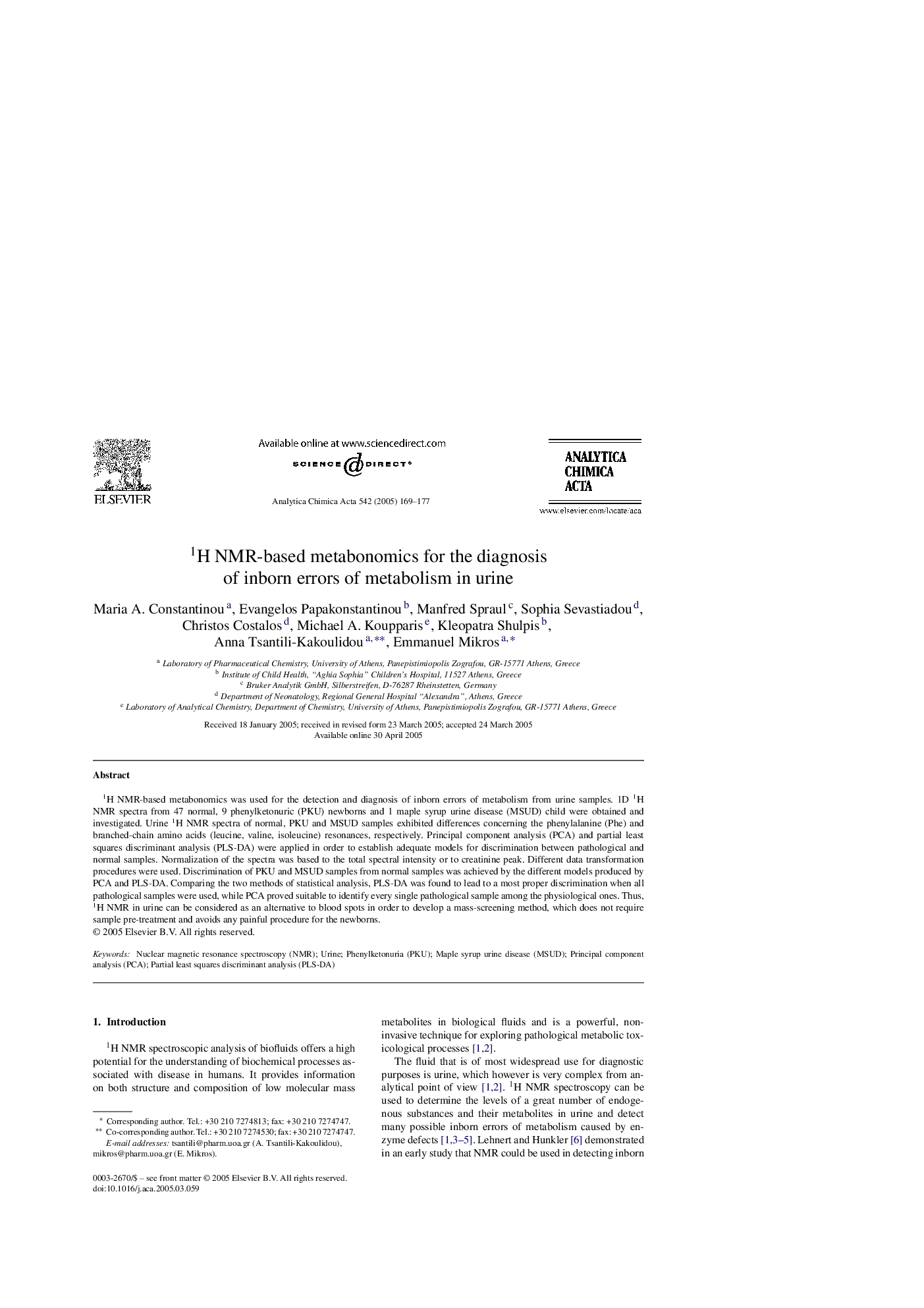| Article ID | Journal | Published Year | Pages | File Type |
|---|---|---|---|---|
| 10529692 | Analytica Chimica Acta | 2005 | 9 Pages |
Abstract
1H NMR-based metabonomics was used for the detection and diagnosis of inborn errors of metabolism from urine samples. 1D 1H NMR spectra from 47 normal, 9 phenylketonuric (PKU) newborns and 1 maple syrup urine disease (MSUD) child were obtained and investigated. Urine 1H NMR spectra of normal, PKU and MSUD samples exhibited differences concerning the phenylalanine (Phe) and branched-chain amino acids (leucine, valine, isoleucine) resonances, respectively. Principal component analysis (PCA) and partial least squares discriminant analysis (PLS-DA) were applied in order to establish adequate models for discrimination between pathological and normal samples. Normalization of the spectra was based to the total spectral intensity or to creatinine peak. Different data transformation procedures were used. Discrimination of PKU and MSUD samples from normal samples was achieved by the different models produced by PCA and PLS-DA. Comparing the two methods of statistical analysis, PLS-DA was found to lead to a most proper discrimination when all pathological samples were used, while PCA proved suitable to identify every single pathological sample among the physiological ones. Thus, 1H NMR in urine can be considered as an alternative to blood spots in order to develop a mass-screening method, which does not require sample pre-treatment and avoids any painful procedure for the newborns.
Keywords
Related Topics
Physical Sciences and Engineering
Chemistry
Analytical Chemistry
Authors
Maria A. Constantinou, Evangelos Papakonstantinou, Manfred Spraul, Sophia Sevastiadou, Christos Costalos, Michael A. Koupparis, Kleopatra Shulpis, Anna Tsantili-Kakoulidou, Emmanuel Mikros,
